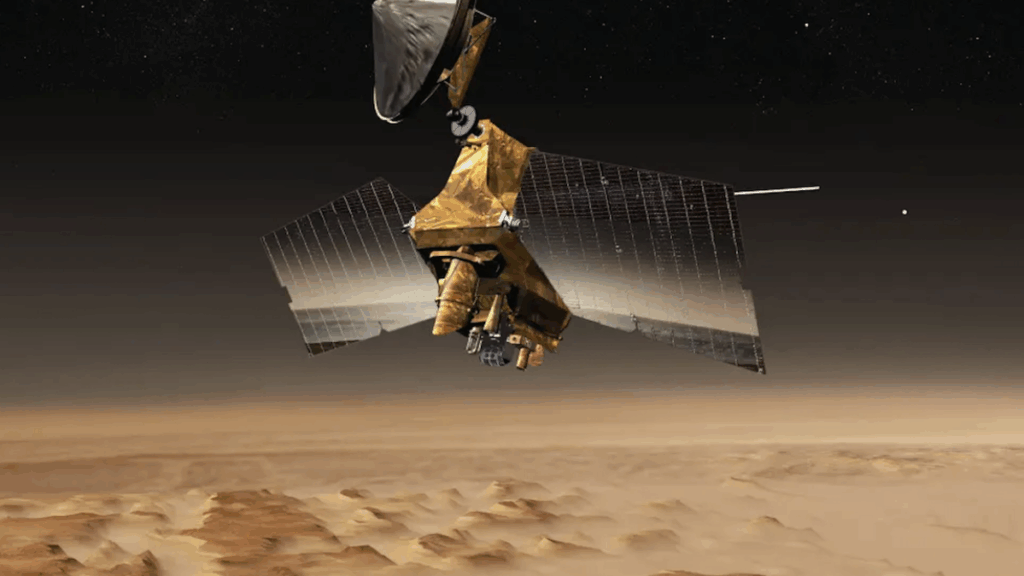Spacecraft spots NASA rover driving through Mars’ desert
A Martian spacecraft spied a Martian rover rumbling through the red desert.
The new image captured by NASA’s Mars Reconnaissance Orbiter — which has orbited Mars since 2006 — shows the space agency’s car-sized Curiosity rover traversing the terrain below as it scales the planet’s 3.4-mile-high Mount Sharp.
“The image marks what may be the first time one of the agency’s Mars orbiters has captured the rover driving,” NASA said in a statement.
The Mars Reconnaissance Orbiter hosts a powerful camera — called the High Resolution Imaging Experiment, or HIRISE — which can spot surface objects as small as a kitchen table from some 160 to 200 miles above the surface. Here, we see the Curiosity rover as a dark spot, trailed by the robot’s tracks as its six metallic wheels crossed the desert.
Mashable Light Speed
These tracks, spanning 1,050 feet (320 meters), were created over 11 separate drives. The orbiter spotted the tracks and rover on Feb. 28.

On Feb. 28, 2025, NASA’s Mars Reconnaissance Orbiter captured this view of the Curiosity rover exploring the Martian surface.
Credit: NASA / JPL-Caltech / University of Arizona
This Tweet is currently unavailable. It might be loading or has been removed.
The Curiosity rover has driven over 21 miles of uneven desert since it landed in 2012, and is now ascending Mount Sharp as it investigates Mars’ climatic and geologic past. Curiosity’s observations point to a Martian past, billions of years ago, that supported floods, lakes, rivers, and even rain. For example, the rover revealed ripple formations on the surface, which is telltale evidence of small waves breaking on lake shores long ago. Observations like this suggest that Mars once was warm, wet, and quite habitable before it gradually transformed into the extremely dry and frigid desert we see today. (Today, Mars is 1,000 times drier than the driest desert on Earth.)
Curiosity is currently headed to a new destination on Mount Sharp, a place home to expansive and compelling “boxworks” formations. From space, they look like spiderwebs. They are “believed to have formed when minerals carried by Mount Sharp’s last pulses of water settled into fractures in surface rock and then hardened,” NASA explained. “As portions of the rock eroded away, what remained were the minerals that had cemented themselves in the fractures, leaving the weblike boxwork.”
As NASA’s rovers find more and more evidence of past water on Mars, it’s becoming clear that Mars was once a planet friendly to life, capable of hosting the temperate environs that could potentially host microbes.
Still today, however, there’s no compelling proof that life ever existed on Mars. But there are quite a few Martian robots, both dead and alive.




